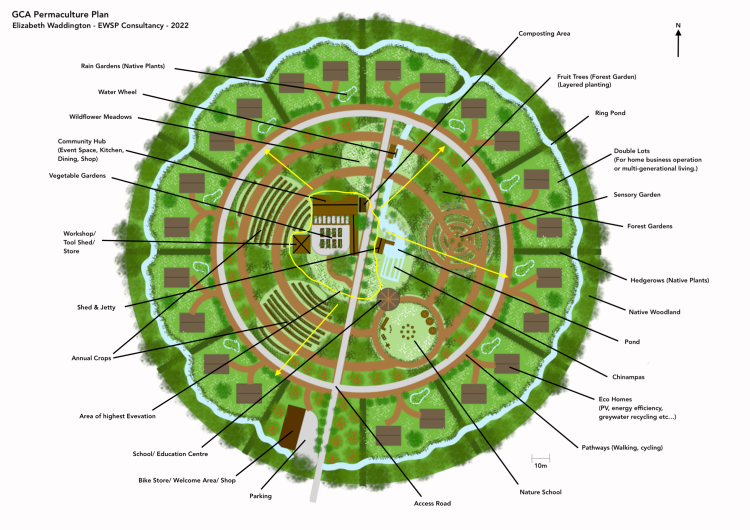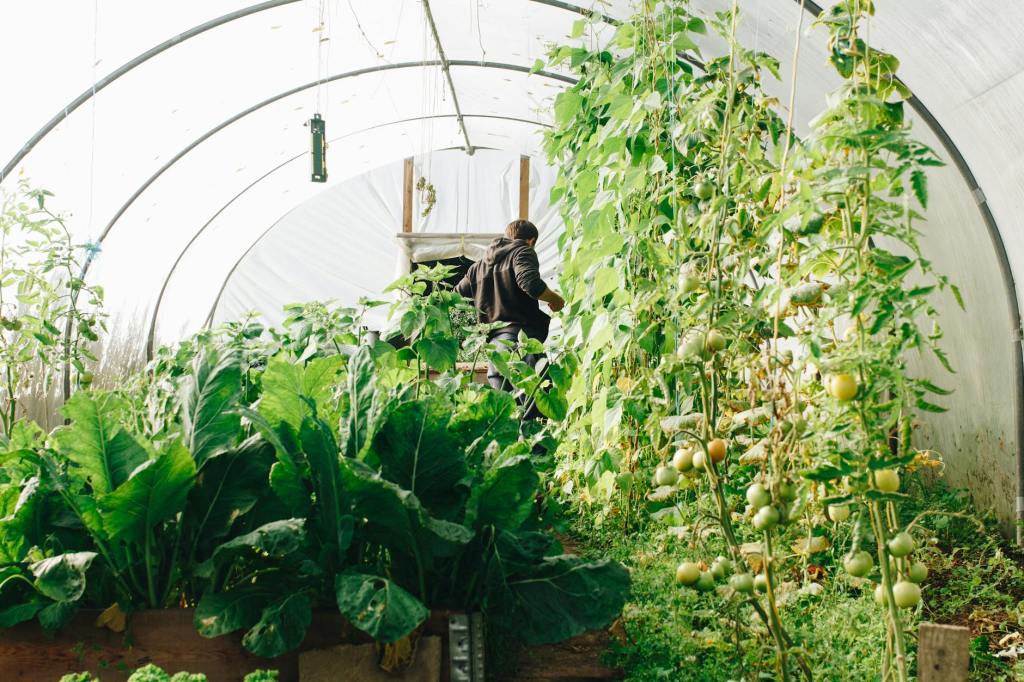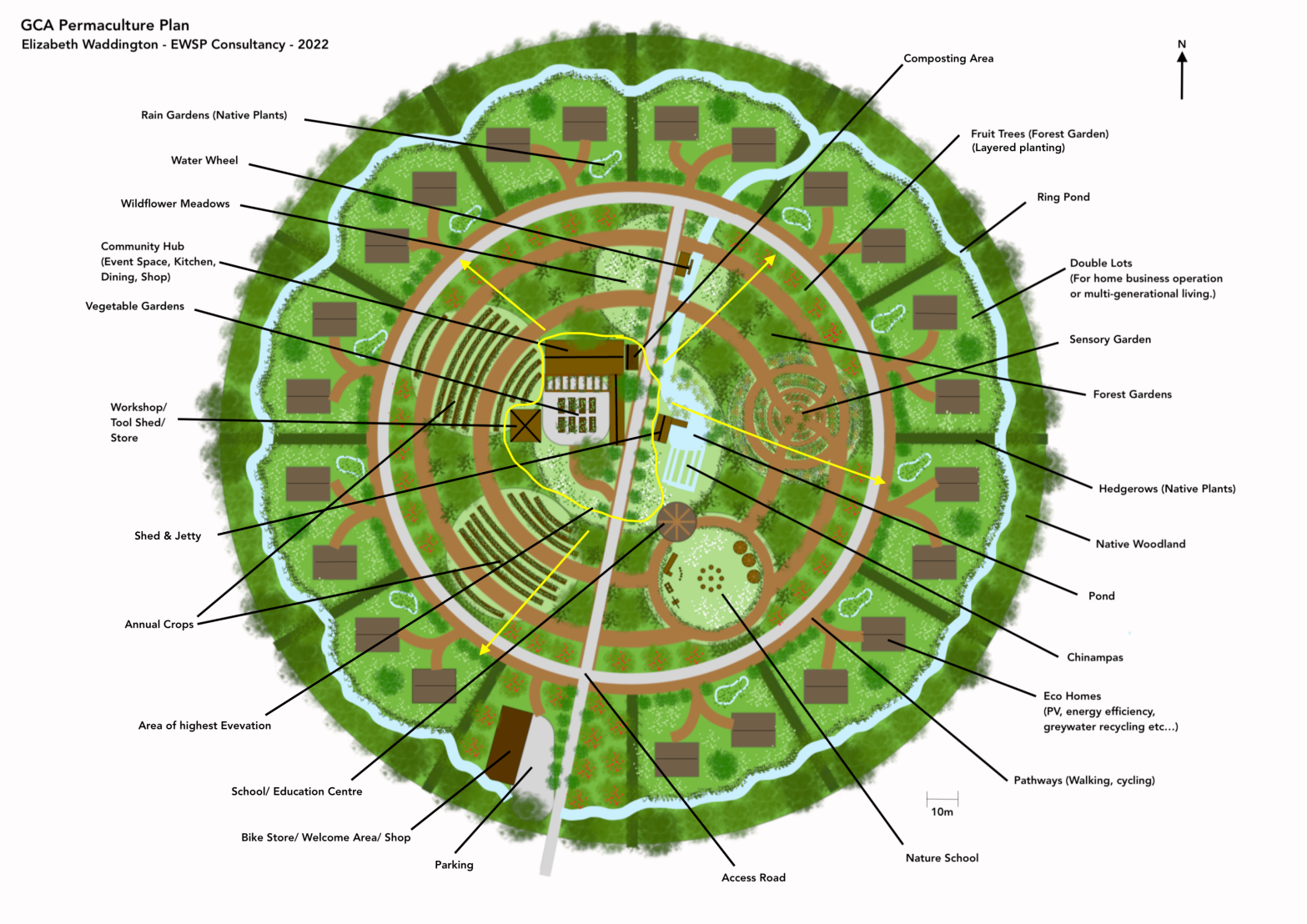I have worked on designs for a range of permaculture communities around the world, on a range of scales. Community is important, and understanding how we can scale up from the personal and individual to a broader-scale resilience though permaculture design is crucial for a sustainable future.
What is a Permaculture Community?

When I talk about permaculture community I am not only talking about people living together in a permaculture-based intentional community, though this can be a wonderful idea.
I am also talking about the community around us in our daily lives, and how we can come together through permaculture on a regular basis, co-operating and collaborating, working towards common goals.
Permaculture communities can intentionally come together to live in a particular location, or can organically form over time. Either way, community is about bring people together and effective permaculture design can help us to do just that.
Forging Community – Bringing People Together

Whether we are talking about creating an eco village, intentional community or co-housing scheme, or are simply trying to get neighbours talking, bringing people together in the first place can be the immediate challenge.
Simple conversations – even small talk – can get the ball rolling. Common interests and goals can soon emerge in even the briefest of chats and finding commonalities with anyone can be an important skill to hone. We all have things in common, even those who disagree fundamentally on a number of important things.
Building community is not just about finding like-minded people. It is also about building connection with those who do not necessarily think the same way as ourselves.
We can do that by talking, but also by simply spending time together. Organising a simple barbecue or picnic is one easy way to get people together.
Disagreements can be part of any community in the early stages of being established, no matter what form that community takes. Even in well-established communities, discord can still occur. We are living in the real world, after all, with all its complexities.
Remember, when disagreements or discord occur – not every interaction needs to be combative or even address an issue. When trying to build community sometimes you just need to get together, free from agenda, and have fun!
Integrating spaces where people can simply congregate and have fun might not seem like it should top the list of considerations in permaculture design, but it can be hugely important.
When planning or re-shaping towns or cities, or creating new settlements, spaces that bring people together simply for fun and recreation are key to forging stronger communities.
Scale: Numbers, Land, and Property
We can talk about communities at a range of different scales. But perhaps the most important within a permaculture context are those with between 30 and, at most, 500 people.
When creating a permaculture village, starting small, at around 10-50 adults, is usually the best policy – building up to form a village of around 200-500 people – so there is some diversity within the population, but everyone can still know each other as long as community events take place from time to time.
Communities in a broader sense also need to be conscious of the impact numbers have on the function of the group and the interactions likely within it. remember, there is a limit to the number of people we can truly know, and a correlation between happiness, and knowing the people around us on a daily basis by name.
When looking at land for community to live on, and when looking at land use within broader communities, the ratio of people to land, and the ability of the land in question to meet the needs of the people are of course key considerations.
Another crucial thing to grapple with for any community is the distinction between private and public property, how much there is of each of these things, and how the areas are defined.
There is some truth in the old adage that good fences make good neighbours – though perhaps those should be hedges instead. Boundaries (of all kinds) do need to be well defined.
But again, there do have to be some spaces where people can get together, and it can be useful if those spaces are not owned or ‘claimed’ by particular individuals. Design can have a role to play in making sure shared spaces retain a sense that they really are equally accessible by all.
Practical Necessities – the Basics

In designing a permaculture community, we need to look at the needs of individuals, but also need to look beyond individual needs to look at the basic requirements of the community as a whole.
It is useful to remember is that in some cases, community reduces individual needs, while in some cases, building community can necessitate further resources.
For example, in a community, communal areas may reduce the need for particular things for each individual family home (with communal food production, communal clothes drying areas, communal power generation, etc… But congregations of people need additional spaces for meetings, events, etc… that a collection of more independent family homes might not need.
Of course, when designing for communities, we need to think about the basics first. We need to consider:
- Access – roads and pathways, accessibility for all community members.
- Water – rainwater harvesting and water-flow management, grey-water systems, aquatic environments for biodiversity etc…
- Energy – renewable energy generation.
- Food – including individual and communal vegetable gardens/ allotments, orchards, areas for any livestock, forage areas, greenhouses or polytunnels, etc…
- Shelter – comfortable and suitable, sustainable family homes.
Whether we are starting from scratch or looking to improve conditions in an established neighbourhood, thinking about these core things is essential. Looking at the basics can help us to see vulnerabilities or fragilities in current systems, or avoid issues that would strike at the core of a new community.
Permaculture Community Enrichment

Naturally, for strong and healthy communities, we also need to think beyond basic needs and enrich the community through the varied elements that we might choose to include in a design for a brand new community, or try to retro-fit to an old one.
For example, we might think about:
- Communal recreational spaces/ community hubs.
- Playgrounds and sports areas.
- Workshops, crafting areas and co-working office spaces.
- Schools and educational facilities.
- Clinics, medicinal and therapeutic gardens, and other healing spaces.
- Swap-shops/ libraries, tool libraries and other sharing/lending features.
- Shops selling food and basic items, small scale financial institutions/ co-ops, etc..
- Reserves for wildlife and conservation areas – community spaces for nature-connection.
Community Connections – Wider Frameworks
Connection to nature is important, but so too are broader connections between human communities.
A small community cut off from wider frameworks may operate entirely successfully for a while. But ultimately, it is important for permaculture communities to play a role within the wider world – be part of broader societal change.
Bioregional organisation can be a useful way for permaculture communities for forge links with other groups – looking outwards as well as inwards and adding their voices to a broader picture of change, on a larger scale.
